Unwanted water infiltration and high levels of moisture in buildings can cause a variety of problems and management difficulties.
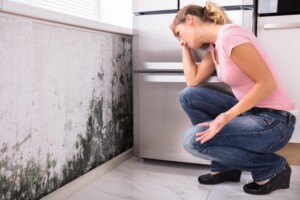
When moisture and dampness are not properly treated, mould can grow and spread across constructed environments, causing irreparable harm to assets and structures.
Mould’s negative impacts on health are becoming well known and recognised. However, the damage that mould may do to the structure of buildings is frequently not adequately addressed, leading to worse management over time.
All organic materials are prone to the formation of mould. Particularly at risk are common building materials made of, or containing, wood or wood fibres, paper, or cardboard.
Numerous paints, glues, and resins encourage the growth of mould, and carpets and insulation can collect a lot of water and dirt.
Therefore, even while water infiltration may happen quickly, it may take days or even weeks for the area to naturally dry out, during which time mould spores may start to spread and thrive.
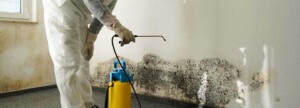
In domestic houses, water damage and microbial growth are possible but frequently undetectable at first.
Long-term moisture effects that go unnoticed can result in the growth of microorganisms, the development of mould, and the deterioration of building components.
Failure or breaches to pipes, both supply and drainage, and from failure of drainage seals are typical sources of major water damage in household settings.
Other factors that contribute to water intrusion include poor building envelope care, inadequately designed stormwater and rainwater drainage systems, and even alterations to buildings that violate the engineering standards or original building design.
The cost of rectification for these effects can go from a few hundred dollars to tens of thousands. Insurance plans might not apply in some circumstances, such as when an accident results from poor upkeep. Insurance companies sometimes have microbiological contamination maximum payout amounts, which frequently do not cover the whole cost of corrective procedures.
An organisation such as Airsafe, should create any remedial scope separately from the cleanup contractor in order to determine the extent of the job.
How Can Airsafe Help?
The team of mould professionals at Airsafe is extremely skilled and knowledgeable, and they can help with the assessment of mould in residential, commercial, and industrial settings as well as provide assurance that treatment is done thoroughly and safely.
Airsafe is here to keep you safe with our comprehensive mould testing, inspections and assessment reports. When you need help with mould in Sydney, it’s best to get in touch with the experts on 1300 888 338.
Asbestos-containing textured material was manufactured and utilised as a surfacing material on walls and ceilings, which was then finished with paint coatings.
Throughout the twentieth century, asbestos was regularly present in many paints and was used to lend dimension to walls and ceilings.
It became popular as manufacturers discovered that asbestos ingredients allowed liquid paint to flow smoothly and be stable in both hot and cold temperatures. Furthermore, Asbestos additives had been developed in order to enhance the colour of the paint.
Paints containing asbestos can be friable, especially if weathered and brittle, or when exposed to heat or sunlight.
One of Airsafe’s licensed asbestos assessors encountered a textured paint containing asbestos (see photographs) in very poor condition while completing an asbestos register for a commercial site.
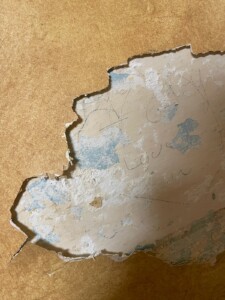
A risk assessment was subsequently undertaken with the identified textured paint containing asbestos considered to pose an unacceptable asbestos exposure health and safety risk.
Airsafe ‘s licensed asbestos assessors completed a scope of remedial works for the subject material with the objective being to yield the area satisfactory with respect to health and safety.
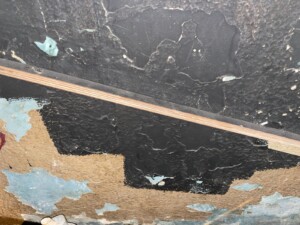
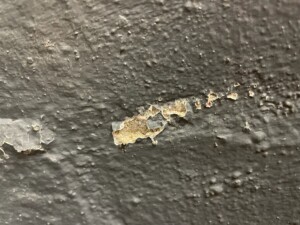
I suspect I may have textured paint with asbestos: What should I do?
Sample testing
Airsafe offers asbestos testing services to identify the type of asbestos present. Airsafe is NATA accredited in accordance with the Australian Standard AS 4964 — Method for the qualitative identification of asbestos in bulk samples. We collect samples for testing, then conduct testing in our state-of-the-art laboratory.
Our independence and NATA accreditation ensure sample integrity, and the high level of expertise of our staff means you can trust our test results. Our customer satisfaction and industry reputation are second to none.
Questions about textured paint with asbestos ? Call Airsafe on 1300 888 338.
PSIs, or preliminary site investigations, are conducted to determine the relative risk of site contamination on a given parcel of land. PSIs are also known as Phase 1 reports. You should consider having a PSI report created if you are concerned about suspected contamination on a site or need to know whether a site is contaminated.
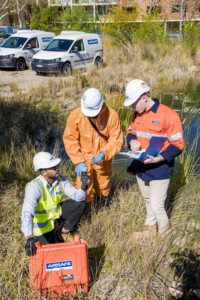
A review of the present site setting, a review of site historical and environmental records, and an inspection by an experienced environmental scientist who will assess the possibility of the site being contaminated should all be included in the PSI report. Source areas, pollutants of possible concern, relevant exposure pathways, and receptors of relevance should all be identified by the PSI.
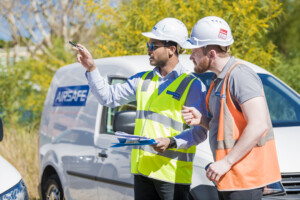 Informed recommendations for additional examination (if potentially contaminated) can be given based on this clear understanding, or the PSI may be sufficient to demonstrate that you are meeting your duties. In most circumstances, if enough information is available and the PSI determines that the location is not possibly hazardous, further investigation is not necessary.
Informed recommendations for additional examination (if potentially contaminated) can be given based on this clear understanding, or the PSI may be sufficient to demonstrate that you are meeting your duties. In most circumstances, if enough information is available and the PSI determines that the location is not possibly hazardous, further investigation is not necessary.
Whatever the situation, you can count on Airsafe to conduct the necessary environmental assessment to guarantee that you satisfy all of your statutory environmental duties in the most cost-effective way possible.
Call Airsafe on 1300 888 338 today if you require a PSI, or preliminary site investigation.
In 2022, Airsafe became the first laboratory in Australia to be NATA accredited to perform paint analysis for elevated levels of lead using our Portable XRF analysis and our validated in-house method.
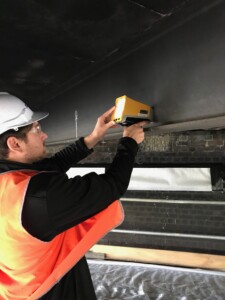
XRF (X-ray fluorescence) is a non-destructive analytical technique used to determine the elemental composition of materials.
NATA accreditation provides that confidence. Being a NATA accredited facility builds credibility in an organisation’s products and services. Overall, accreditation creates confidence by providing a structured and reliable framework for the quality of results ensuring their traceability, comparability and validity.
This in-situ analysis is used to obtain qualitative data to assist decisions on a further sampling strategy. Airsafe can do this using our validated operating procedures and instrument set-up (often described as a ‘calibration’ or ‘calibration check’ in the manufacturer’s literature) subject to limitations.
Lead is an accumulative poison that can be inhaled or swallowed when a process produces lead dust, fumes, or mist. Lead can be found in a wide range of industrial and consumer products. Dust and flakes from lead paint are the most common sources of lead exposure.
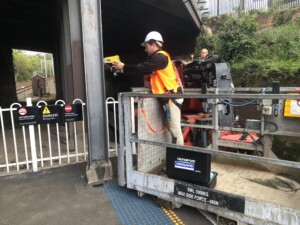
Benefits of XRF testing
- Speed: Portable XRF analysers enable quick decisions and give lab-quality results in seconds.
- Real-Time Reporting: Field analyses enable faster delineation of target areas.
- Increased Sample Density: Running more samples in the field allows for finer grid resolution and a more comprehensive picture.
- Portability: The analysers are lightweight, rugged, and can be operated in the field anytime, anywhere.
- Accuracy with or without sample preparation: Handheld XRF analysers are designed for simple point-and-shoot operation.
On-site testing via XRF is non-destructive, saves time and allows us to test a greater volume.
Call Airsafe on 1300 888 338 today to get testing!
Do you have an unexplained health issue that can’t be attributed to anything specific? Returning to work after the COVID-19 pandemic and feeling unwell is not an uncommon problem.
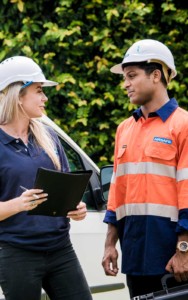
Workers spend more time in the office than we do in our own homes. Office air quality is known to influence our physical and mental health.
Sick building syndrome is a phenomenon that involves a variety of symptoms that occur in the occupants of a building. This feeling of ill health increases sickness absenteeism and causes a decrease in the productivity of the workers.
“Headache, dizziness, nausea, eye, nose or throat irritation, dry cough, dry or itching skin, difficulty in concentration, fatigue, sensitivity to odours, hoarseness of voice, allergies, colds, flu-like symptoms, increased incidence of asthma attacks and personality changes.
The cause of the symptoms is not known. It reduces work efficiency and increases absenteeism. Most of the complainants report relief soon after leaving the building, although lingering effects of toxins can occur.”
This syndrome is increasingly becoming a major occupational hazard, the cause, management, and prevention of this condition has been brought to Airsafe’s attention to investigate.
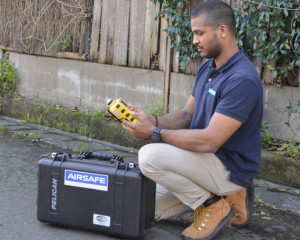
Occupational hygienists at Airsafe were recently engaged to address the indoor air quality of office space near a busy highway. The results were alarming. However, the extensive range of technical equipment, coupled with a tailored management plan provided by Airsafe allowed alleviation measures to be put in place.
Need help with a workplace indoor air quality assessment? Call Airsafe on 1300 888 338.
Professor Gill North was one of those inspiring people who turn personal misfortune into action to improve the lives of others.
After a distinguished career as a law academic and corporate governance expert, Professor North was diagnosed with mesothelioma, a deadly disease caused by exposure to asbestos fibres. After a three year battle with the disease, she died on 23 December 2021.
Professor North never worked with asbestos, so her exposure wasn’t workplace-related. Instead, she was one of the third wave of asbestos victims – home renovators who expose themselves to asbestos without knowing the dangers. Before her death, she gave several media interviews, speaking movingly and compellingly about the need for awareness and action:
Professor North’s experience led her to start an organisation, Asbestos Awareness Australia, to start a public conversation about asbestos and to call for public health and policy action to prevent further needless deaths. In a survey of 43,000 Australian households, the organisation found that more than two thirds lack basic knowledge of the nature and risks of asbestos.
In response to this lack of awareness and the ongoing risk from asbestos being so common in Australian homes, Professor North’s organisation is calling for specific reforms:
- Nationally coordinated public health campaigns that warn about the specific risks and deadliness of exposure to legacy asbestos.
- Compulsory residential property asbestos assessments prior to sale, renovation, or lease.
- Legal requirements for residential property owners to have all asbestos removed by licensed professionals.
- The introduction of interest free loans (means tested) for residential property owners to support the removal of asbestos by licensed professionals.
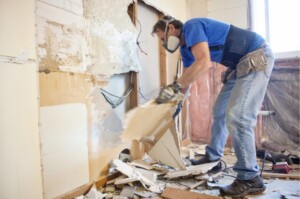
Airsafe has long believed that government at all levels in Australia needs to take the risks of asbestos more seriously. We applaud Professor North’s legacy, and support her call for reform to save lives.
Book an asbestos inspection today
Airsafe are the experts in asbestos inspections throughout NSW. From Sydney to Newcastle and beyond, we have conducted countless asbestos audits that will provide you with completed and accurate documentation. To book an asbestos inspection in Sydney, NSW, contact us on 1300 888 338 today.
Airsafe was involved with remediation of a Loose Fill Asbestos Insulation Property in conjunction with the class A friable licensed asbestos removal contractor BEasy and the Public Works Advisory.

The project involved the design and construction of a fully enclosed impermeable enclosure for the property to ensure no loose asbestos fibres escape during friable asbestos removal works. An independent Licensed Asbestos Assessor (LAA) was then assigned to the property to witness and endorse these enclosures and provide interim and final clearance certificates as the project progresses.
Once all internal strip out works were completed including the removal of wall and ceiling linings, interim certificates were issued by the LAA and the interior of the property was entirely covered in a blue tinted paint as an extra precautionary measure. These works were witnessed and endorsed by NSW Public Works Advisory prior to the next phase of works commencing.
Upon completion of asbestos removal works, demolition and soil remediation works commenced. The property was fully demolished including footings and nominated ancillary structures. 100mm depth of soil from the entire footprint of the house extending to a distance of 1 meter from the exterior gutter line around the perimeter of the house was excavated and disposed of as asbestos contaminated soil.
After completion of all asbestos removal, demolition and remediation activities the LAA undertook soil sampling at 12 locations to assess if any asbestos contamination remains on the property. A final clearance certificate was issued by the LAA and property was deemed rehabilitated to the fulfilment of the scope specification.

Need help with demolition and or remediation? Call Airsafe on 1300 888 338.
By 2021, Airsafe had outgrown our old Balmain offices and were in desperate need of something considerably larger, as well as a place where we could fully immerse ourselves in our much-loved Airsafe identity.
Our former offices were fantastic; we created a lot of amazing memories and completed a lot of high profile projects there. Nevertheless, we couldn’t be more excited to move into our new offices in Rosebery and begin a new chapter.
Airsafe collaborated with Trinity Quality Interiors and Lead Architects to create an environment that everyone can be proud of.
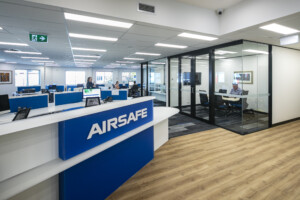
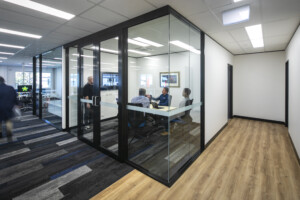
Our new office has much better facilities that are benefiting both us and our clients, including our new meeting room, a reception area, and significantly additional desk space to handle our continuing growth.
We were ecstatic to get our hands on our new digs, and as you can see, we didn’t hold back. We enthusiastically set up our laboratory and break out areas in preparation for holding training courses and industry nights whenever possible (we don’t do things half-heartedly).
We’re overjoyed to have finally settled into our new offices and gotten back into the swing of things.
Do stop by if you’re interested in any of our services, such as:
- site contamination assessment
- air quality assessments and monitoring
- asbestos inspection
- laboratory testing
- hazardous materials surveys
- occupational health and safety services
- project management.
You won’t be able to miss us, and coffees are on us!
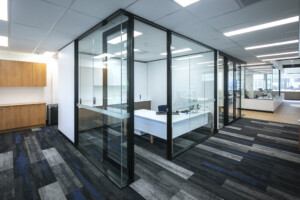
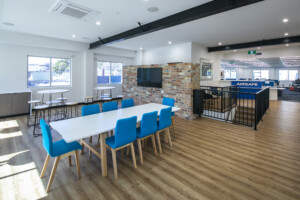
With home renovations and DIY becoming more and more popular, Aussies need to be aware of the risk of being exposed to asbestos.
Is my home likely to contain asbestos?
Asbestos cement products were first made in Australia in the 1920s and were widely used in construction materials from the mid-1940s until the late 1980s.
These asbestos cement materials were phased out in the 1980s in favour of asbestos-free alternatives. As of December 31, 2003, all types of asbestos were prohibited from being manufactured, used, reused, imported, transported, stored, or sold.
If your home was built before 1990, it’s likely to contain some form of asbestos. Asbestos is most commonly found in eaves, internal and exterior wall cladding, ceilings (especially in wet areas such as bathrooms and laundries), and fences.

Asbestos and your health
Asbestos becomes a health concern when its fibres are inhaled. Because asbestos fibres are bonded together in solid cement, undisturbed asbestos cement materials in good condition are not a health risk.
However, if the material is damaged or crumbling (what we call ‘friable’), or if it’s disturbed by breaking, cutting, drilling or sanding, fibres are released into the air.
There are also some asbestos products that are friable by nature, such as spray-on insulation or asbestos-rope gaskets in wood stoves and heaters. There is no safe form of these products.
Damaged asbestos cement materials, and all friable asbestos products, must be carefully managed to prevent the release of fibres into the air.
Asbestos exposure risks for householders
Accidental exposure to asbestos fibres can happen even during minor household maintenance. It can come from unintentionally putting your foot through a ceiling sheet, putting up a new towel rail, or even cleaning up garden debris.
If you think you may have been exposed to asbestos, take prompt steps to reduce any further exposure. For example, you could remove broken pieces, wipe down surfaces with a wet cloth, close doors and windows, or even temporarily relocate while the work is being carried out.
Some particularly risky activities are:
- using power tools for cutting, drilling, grinding, sanding or sawing
- using high-pressure water blasters for cleaning
- removing old vinyl and linoleum floor coverings and tiles.
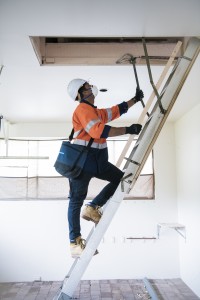
How Airsafe can help
At Airsafe, we’re nationally recognised as experts on asbestos inspection and testing. In an article on Domain, we’re quoted on the importance of testing samples for asbestos before undertaking home renovations.
We’re accredited by NATA, the body that accredits testing laboratories. You can check out the details of our accreditation on NATA’s website.
If you need samples tested for asbestos, Airsafe can not only do the testing, we can help you make sense of the findings.
Contact Airsafe on 1300 869 598 or email info@airsafe.net.au
An Asbestos Management Plan is a document that helps people managing a building prevent exposure to asbestos and protect site personnel and visitors.
The Asbestos Management Plan is intended to be a simple, centrally placed document that includes:
- the nominated asbestos control officer
- an asbestos survey and register containing all relevant information from an asbestos investigation, such as the amount and location of asbestos
- ongoing and upcoming tasks that may interfere with asbestos containing materials (ACM)
- an activity schedule for monitoring the status of ACM
- explicit instructions and a plan for anyone who may interfere with asbestos.
Asbestos management plans can be recorded on paper, but nowadays companies often find it simpler to record their plans electronically.
Asbestos management plans can be either asset-based (for complex buildings) or project-based (for construction projects).
Asbestos management plans should include plans for ongoing asbestos investigations to manage risks and to comply with Work Health and Safety Regulations and Safe Work Australia guidelines.
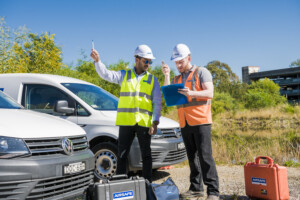
Who needs an asbestos management plan?
You don’t need an asbestos management plan if your workplace was built after 31 December 2003.
For buildings constructed earlier, you need an asbestos management plan if asbestos has been identified in your workplace, either based on surveys or asbestos registration. If you’ve had a survey and no asbestos has been found, you don’t need an asbestos management plan.
What to include in an asbestos management plan
A good asbestos management plan includes:
- a detailed report on the location and amount of asbestos
- a strong plan on how to work safely to avoid the potential disturbance of ACM.
- how to manage and monitor ACM, along with a complete implementation strategy
- the length of time required to comply with applicable work health and safety laws and norms in order to be fully compliant.
- roles and responsibilities of owners and managers
- training needs and training plans to be implemented
- for work carried out in real estate, project management guidelines, clear audit trails and accurate reporting for stakeholders, regulators and municipalities.
Access to an asbestos management plan
Asbestos management plans must be available all workers performing tasks in the building, and all health and safety personnel in the workplace. They help licensed asbestos evaluators and hygiene personnel carry out accurate asbestos surveys and develop further asbestos management plans to maintain a safe working environment.
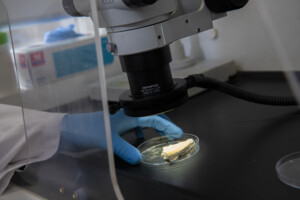
Other risks
If you are concerned that your building has lead paints, polychlorinated biphenyls (PCBs), ozone-depleting substances (ODS), or other harmful substances such as mould, carry out a full hazardous materials survey so these risks are evaluated at the same time as your asbestos survey. This allows you to safely manage the risks associated with the presence and interference of these substances during routine removal or maintenance work.
These other substances don’t just present risks in their own right; knowing about them is also important for managing the risk of asbestos.